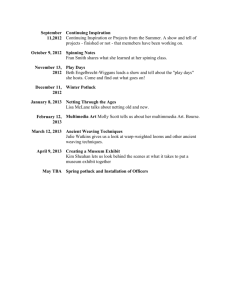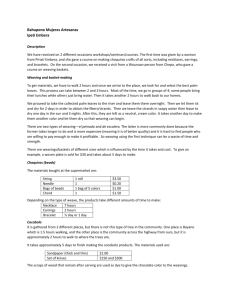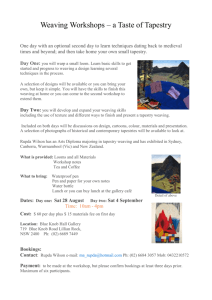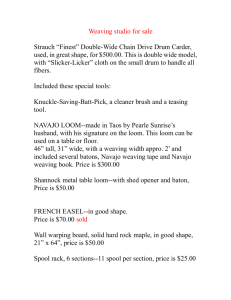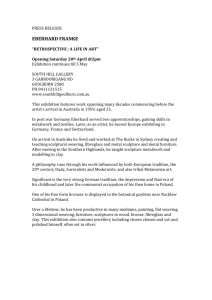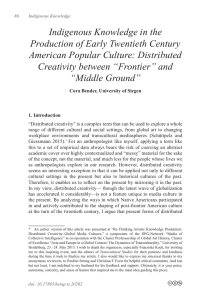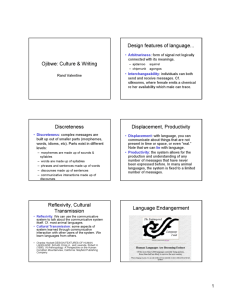v3i2-art-finger-weaving - American Indian News Service
advertisement
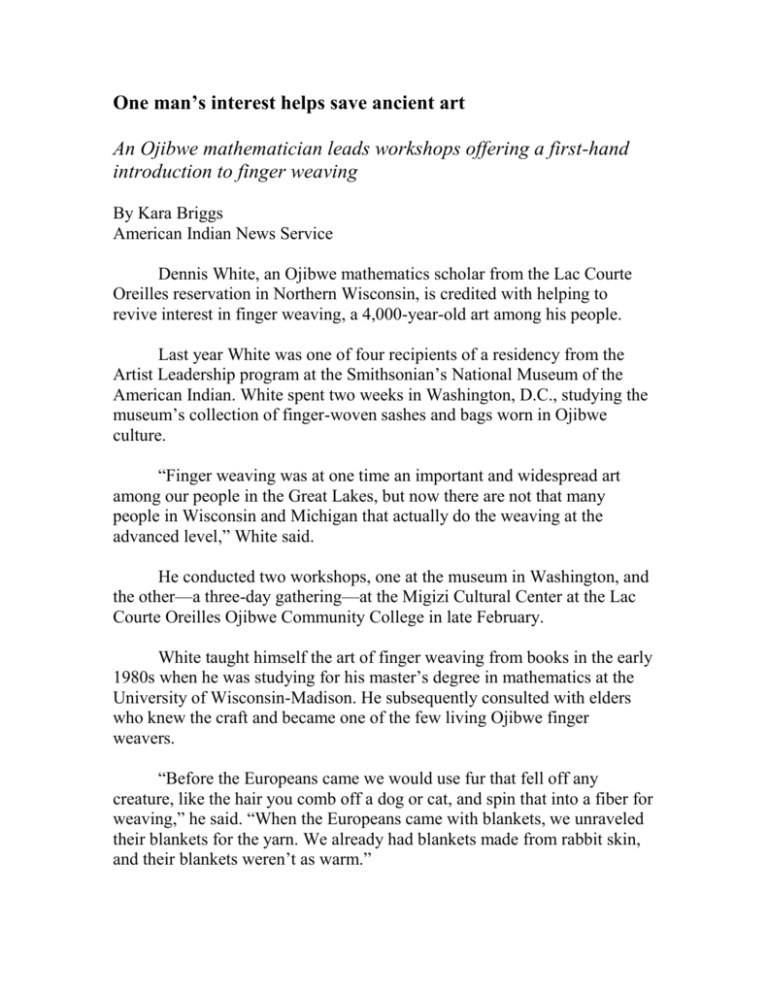
One man’s interest helps save ancient art An Ojibwe mathematician leads workshops offering a first-hand introduction to finger weaving By Kara Briggs American Indian News Service Dennis White, an Ojibwe mathematics scholar from the Lac Courte Oreilles reservation in Northern Wisconsin, is credited with helping to revive interest in finger weaving, a 4,000-year-old art among his people. Last year White was one of four recipients of a residency from the Artist Leadership program at the Smithsonian’s National Museum of the American Indian. White spent two weeks in Washington, D.C., studying the museum’s collection of finger-woven sashes and bags worn in Ojibwe culture. “Finger weaving was at one time an important and widespread art among our people in the Great Lakes, but now there are not that many people in Wisconsin and Michigan that actually do the weaving at the advanced level,” White said. He conducted two workshops, one at the museum in Washington, and the other—a three-day gathering—at the Migizi Cultural Center at the Lac Courte Oreilles Ojibwe Community College in late February. White taught himself the art of finger weaving from books in the early 1980s when he was studying for his master’s degree in mathematics at the University of Wisconsin-Madison. He subsequently consulted with elders who knew the craft and became one of the few living Ojibwe finger weavers. “Before the Europeans came we would use fur that fell off any creature, like the hair you comb off a dog or cat, and spin that into a fiber for weaving,” he said. “When the Europeans came with blankets, we unraveled their blankets for the yarn. We already had blankets made from rabbit skin, and their blankets weren’t as warm.” White, who works as the administrator at the Lac Courte Oreilles Ojibwe School, www.lcoschools.bia.edu, also has been known to use finger weaving as a way to teach mathematics to young people. “To me there is a fine line and almost no line between mathematics and art,” White said. “The designs I make for my belts and sashes, they start out as a set of symbols. “If I have a problem weaving that is probably a number problem,” he said. “If you can recognize the patterns you are on your way to understanding mathematics.” Read more about White at www.dailyyonder.com/fancy-sky-goeswashington/2009/12/08/2482. Learn about the National Museum of the American Indian’s Expressive Arts Program at www.americanindian.si.edu/icap/recipients.html. The American Indian News Service is produced for the National Museum of the American Indian by journalist Kara Briggs, Yakama/Snohomish. All content is free to publish or post. Email her at editor@americanindiannews.org. Visit the American Indian News Service at www.americanindiannews.org.

